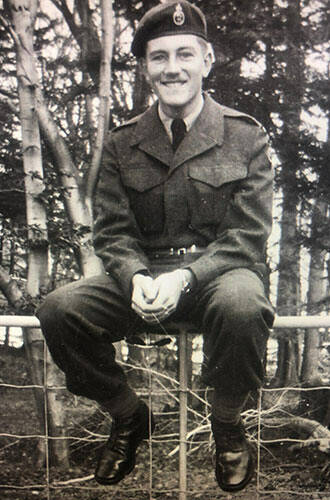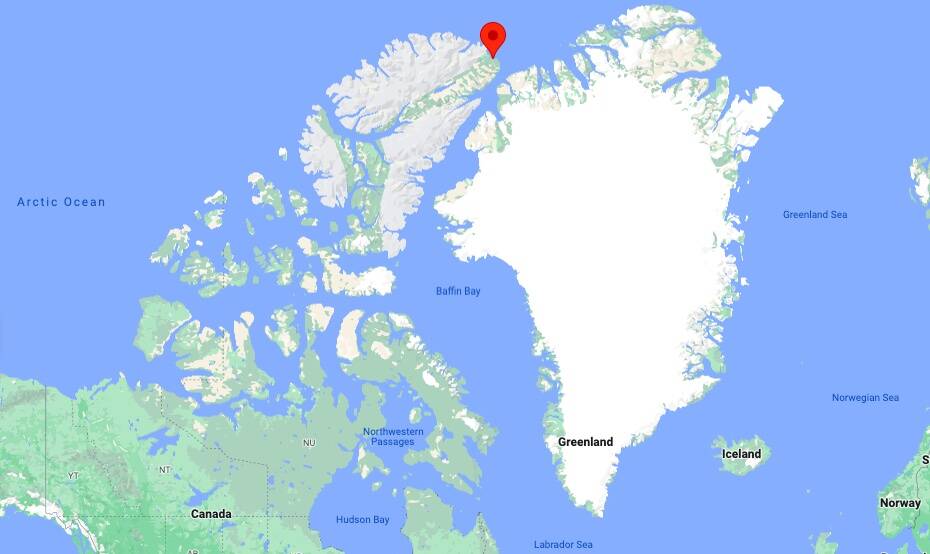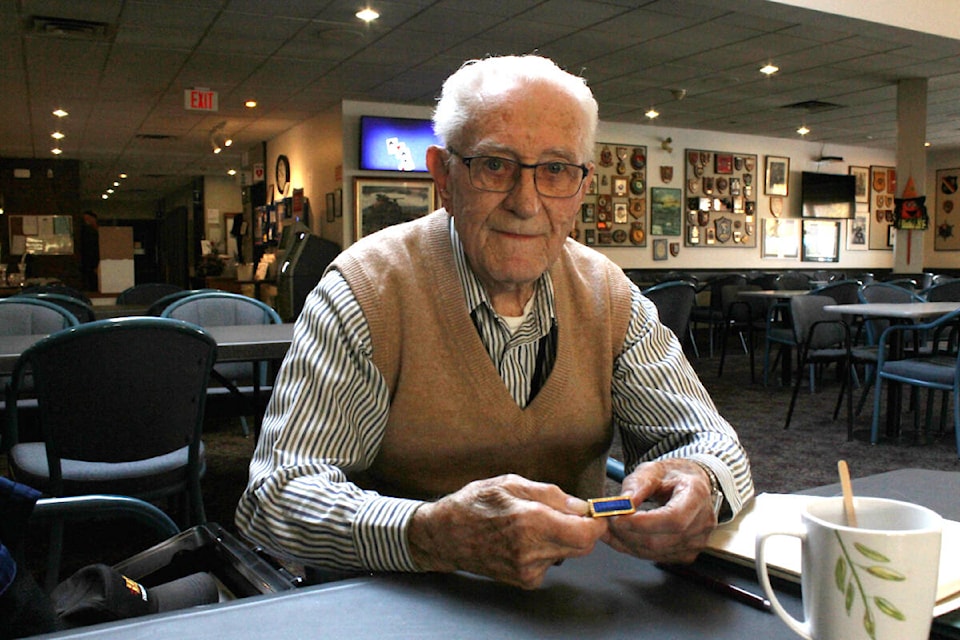In a veteran’s lifetime, there is a broad spectrum of experiences difficult for many people to imagine. Not only have they faced the terrors of war but they’ve also witnessed unprecedented changes in the evolution of technology and science. The life of veteran Edwin “Ted” Adye embodies this phenomenon.
A mere 11 years after he was wounded in the Korean War, Adye found himself in the desolate, freezing conditions of the Arctic. It was there that he received news via ham radio in the cold, dark months of January 1962, that his daughter had just been born in Kingston, Ont.
“I didn’t see her til March,” he recalled. “All the Hams across the country were sending congratulations. It was two or three pages in the log book up there with all this business of my daughter being born.”
Born 34 years prior in 1928, in Toronto, Ont., Adye inherited a legacy of service. His father had fought in the First World War, and though wounded and gassed, made it home to eventually serve as a chaplain in the Second World War. Heeding the military call, Adye joined the Special Forces in August 1950, which was preparing to aid in the Korean War. It was a response to the United Nations Security Council’s urgent call to its members to help repel the Democratic People’s Republic of Korea (DPRK, also known as North Korea), which was coming close to completely conquering all of South Korea, save for a tiny area in peril at the end of the Korean Peninsula.

“The lineups were fantastic trying to join up,” recalled Adye, who was only 21 at the time, jumping into the unknown from a stable career as an electrician.
By November 1950, after 20 days aboard the USNS Private Joe P. Martinez with around 800 other Canadians and 400 American troops, he wound up with the second battalion of PPCLI in Pusan, Korea.
Their training was fast-tracked into six weeks, reflecting the pressing need for their presence on the front lines. Adye and fellow military members were handed loaded guns and told to guard the ship their first night and by February 1951, they were sent to the dangerous front lines where Adye would eventually take a near-fatal bullet.
Alert, Nunavut, 1961-62
Fast-forward just over 10 years to Alert, Nunavut, an extremely cold destination just 448 miles from the North Pole. From 1952 until 1977, Adye was an electrician in the Royal Canadian Engineers, posted back and forth across Canada. This was just one of those stops.
“I went up in September when we still had daylight … Pretty early in October we were into total darkness. We sure looked forward to the moon coming up.”
Adye recalled this with veteran Jim Kempling sitting beside him at Gorge Legion listening intently. Kempling had also been to Alert.

“I remember seeing behind a big glass case, an AWOL kit: ‘If you’re really desperate and want to go absent, break this glass’, and there were snowshoes and a big pack and it said ‘The next closest place is 850 miles due south, so feel free,’” said Kempling, chuckling. The story made Adye laugh at the surrealist nature of their circumstances.
Korea, 1951
Despite the brutal conditions in Alert, it paled to the conditions of the front lines of Korea.
On Oct. 10, 1951, it was a mere three days before Adye was supposed to leave the front lines to return to Canada. A battle erupted and soon Adye found himself in a flurry of bullets, one of which took a path piercing through his right lung.
“It was like a white-hot spear when that bullet went through and then the ride down on the stretcher was hell. The doctor gave me some more morphine and that sure helped. And then I was helicoptered to the Norwegian MASH the next morning,” he said.
“I didn’t wake up for three days. I don’t know whether they were keeping me under or I was just out. But by the time I woke, I wasn’t feeling too bad.”
The same night Adye took a bullet, their company CSM sergeant major was killed just hours after Adye had been talking with him.
In a stroke of fortune, Adye survived and went on to have a family and share his narrative. His story shows just how much culture, security and technology can change in a lifetime and highlights the extreme sacrifices made by the military. Today, Adye stands among the dwindling ranks of Korean War veterans, a living testament to a pivotal chapter in history.
Kempling, who has a PhD in history at UVic, said that the community in Victoria has been “incredibly supportive of Korean veterans” and for good reason. “It really was a turning point in the Korean War. If the Patricias had not held in Kapyong, Seoul would’ve fallen. And it might’ve been the end of the war the wrong way around.”
